The 13 Most Beautiful Castles in England
- Oops!Something went wrong.Please try again later.
- Oops!Something went wrong.Please try again later.
- Oops!Something went wrong.Please try again later.
Visit these castles in England for a fairy-tale vacation.
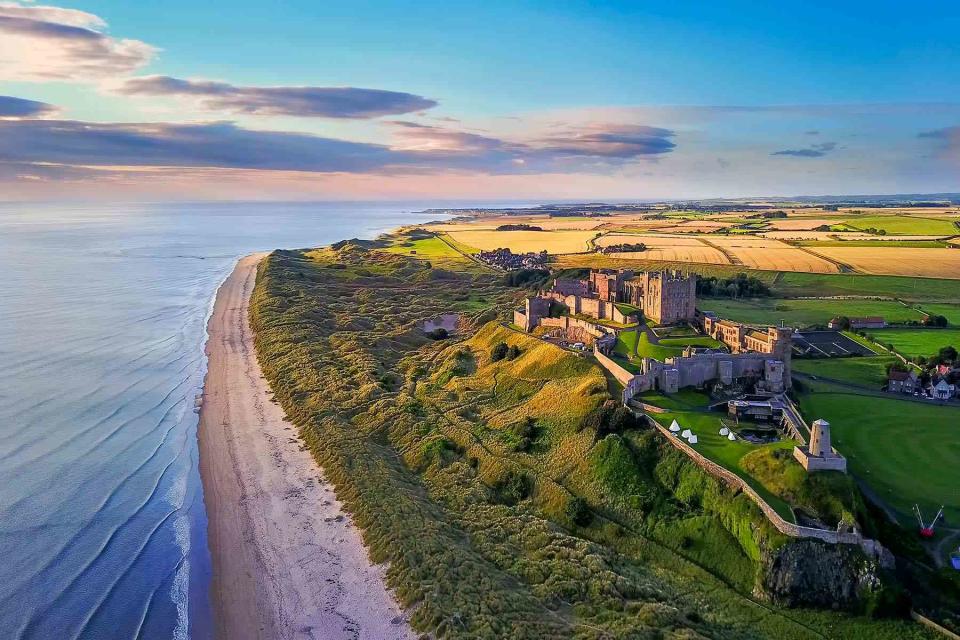
VisitBritain/Yin Sun Photography
If there’s one thing England does better than anywhere else in the world — aside from medieval playwrights, pub lunches, and 1960s boy bands — it’s castles.
This is, after all, a country that is home to nearly 800 surviving stone fortresses, some dating back as far as the 11th century. Whether you’re a dedicated Harry Potter or Downtown Abbey fan, a passing history lover, or a genuine drawbridge devotee, read on for the ultimate fortified favorites to add to your next English itinerary.
Arundel Castle, West Sussex
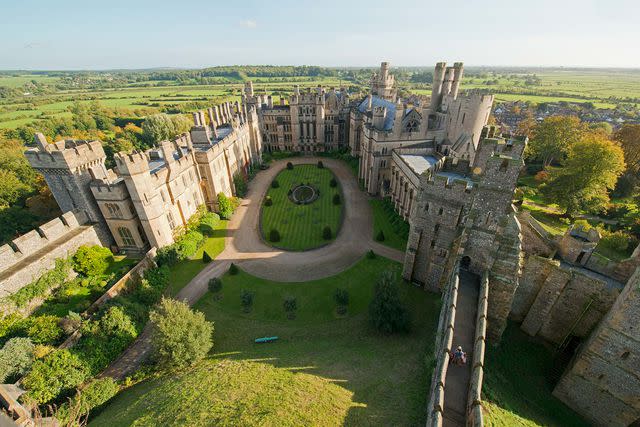
VisitBritain/Pete Seaward
An easy hour's drive or train ride from London, Arundel has been home to the Dukes of Norfolk for more than 850 years, and they’ve done a fine job with its upkeep. This was one of the first castles in Europe to have central heating, electricity, and elevators in the towers, and it remains in excellent condition today. Visitors can check out many of its magnificent rooms, as well as its 14th-century chapel and exquisite gardens. Meanwhile, the quaint town of Arundel, huddled about the foot of the castle, is well worth exploring, too (particularly the legendary Black Rabbit Pub, which serves one of the best Sunday roasts in Sussex).
Highclere Castle, Hampshire
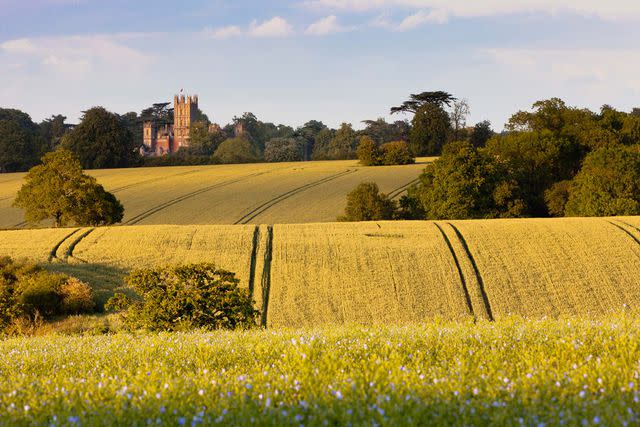
Peter Orr Photography/Getty Images
The “real” Downtown Abbey, Highclere was built in the late 17th century, making it one of England’s youngest major castles. It is also indisputably one of the most beautiful, with its intricate state rooms, elegant saloon, and palatial dining room. A big part of the appeal is its sprawling grounds — best enjoyed with one of the castle’s famous picnic hampers, containing impeccable sponge cakes, scones, and sandwiches, as well as a demi-bottle of Joseph Perrier Champagne.
Windsor Castle, Berkshire
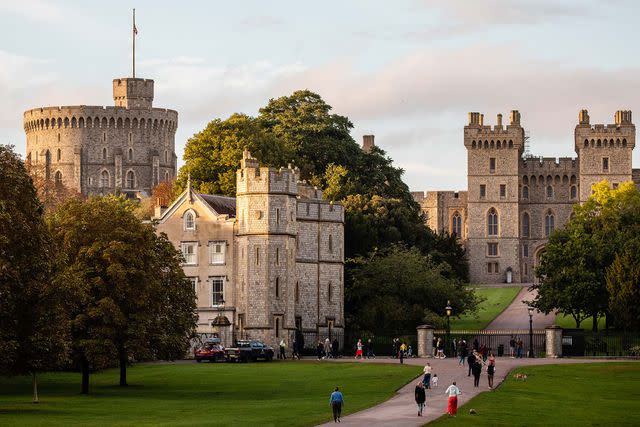
Mark Kerrison/Getty Images
Royal watchers (and fans of The Crown) will be well aware of Windsor Castle, the family home of British kings and queens for over 1,000 years — and still a residence of King Charles III today. Famously the largest and oldest inhabited castle in the world, the good news is plenty of the property is now open to the public, including the grandiose State Apartments and gothic St. George’s Chapel, where Prince Harry and Meghan Markle were married.
Alnwick Castle, Northumberland
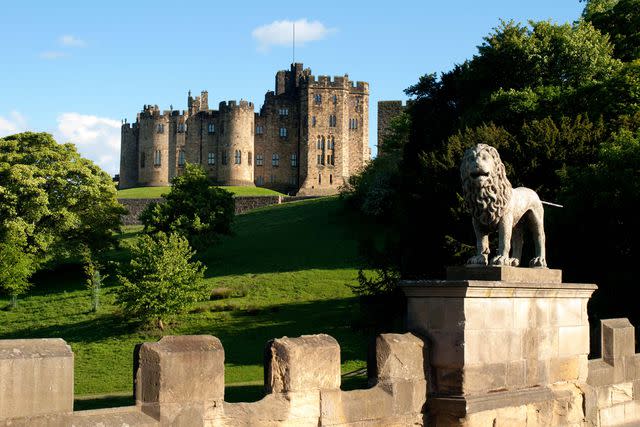
Gannet77/Getty Images
Doubling as Hogwarts in the first two Harry Potter movies, Alnwick has been occupied by the Dukes of Northumberland for over 700 years. The current duke and duchess live in a private part of the 11th-century fortress, but the rest is open to the public for seven months of the year, with highlights including an important gallery of Italian paintings, a lavish library, and a dedicated Harry Potter tour — including broomstick lessons in the courtyard (Golden Snitch not included).
Warwick Castle, Warwickshire
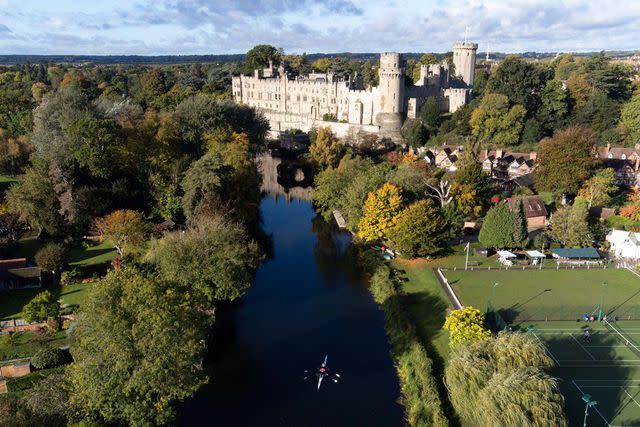
Jacob King - PA Images/Getty Images
One of the oldest fortified citadels in England, Warwick Castle was originally built by William the Conqueror in 1068 but has been refortified several times since. Today, the huge castle is “full to the turrets” with family-friendly activities, including dungeon tours, fiery ballista demonstrations, and jousting tournaments. Overnight rooms are available in the castle (including tower suites with four-poster beds) or the riverside Knight’s Village, where you’ll find a cozy collection of woodland lodges.
Bamburgh Castle, Northumberland
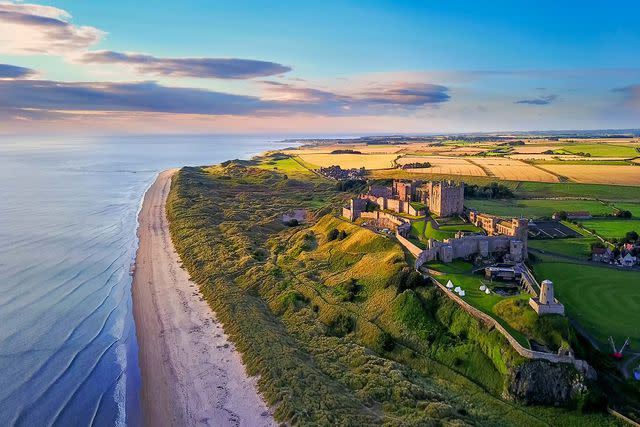
VisitBritain/Yin Sun Photography
Forget your regular dukes and lords; Bamburgh Castle was home to the Anglo-Saxon kings of Northumbria before England was even a country. Today the breathtaking building, perched on a dramatic rocky outcrop overlooking the wild North Sea, is considered one of Europe’s finest coastal fortresses. When you visit, don’t miss the dazzling collection of medieval armor in the state rooms, or the famous Bamburgh Sword — a seventh-century weapon shrouded in myth.
Leeds Castle, Kent
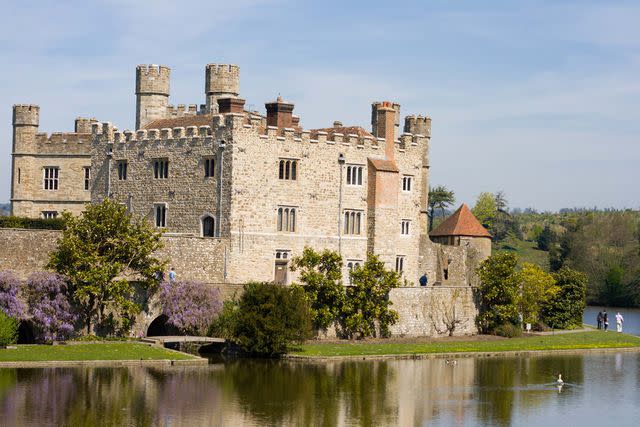
ptaxa/Getty Images
Despite its name, you’ll find Leeds Castle hundreds of miles from the city of Leeds, on a peaceful lake island in the middle of Kent. Surrounded by a handsome moat, the history of this fairy-tale fortress goes back 900 years and involves no less than six queens calling it home (hence its nickname, “The Ladies Castle”). The gardens are almost as photogenic as the castle itself and include a fiendish circular maze, mirroring the shape of a queen’s crown.
Sudeley Castle, Gloucestershire
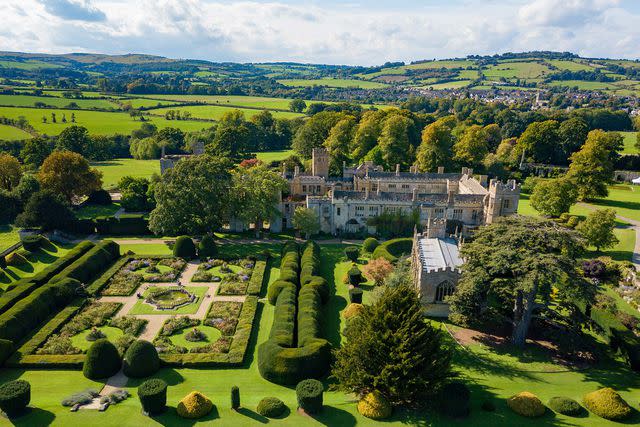
Visit Britain/Sudeley Castle LLP
Considering its importance in English history, it’s baffling how Sudeley Castle is not better known. Tucked away in the idyllic Cotswolds near the pretty market town of Winchcombe, it was a favorite of influential monarchs ranging from Richard the Lionheart to Queen Elizabeth I. Highlights include the "20 treasures of Sudeley," a collection of important artifacts that altered the historical narrative, and a charming 15th-century chapel in the gardens, the final resting place of Katherine Parr, the sixth wife of Henry VIII and the most infamous “survivor” of the Tudor era.
Framlingham Castle, Suffolk
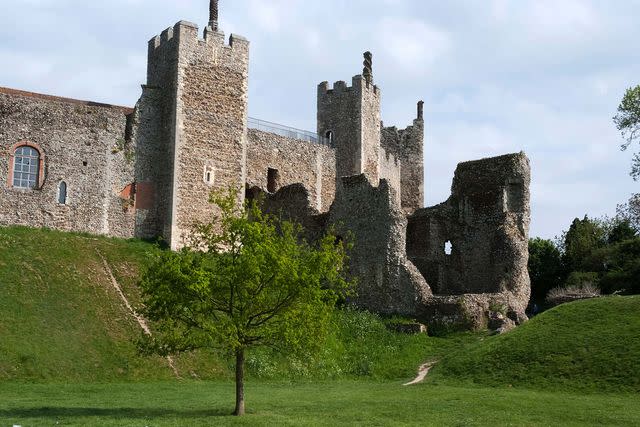
Heritage Images/Getty Images
A perfect example of the “motte and bailey” fortifications of the 11th and 12th centuries, Framlingham Castle sits in the rolling Suffolk countryside, about a 30-minute drive northeast of Ipswich. Famed as the place where Mary I was first proclaimed Queen of England, modern visitors can hike around the castle’s intact curtain wall, enjoying magnificent views of the nearby River Ore before retiring to the castle café for a well-earned pot of tea.
Rochester Castle, Kent
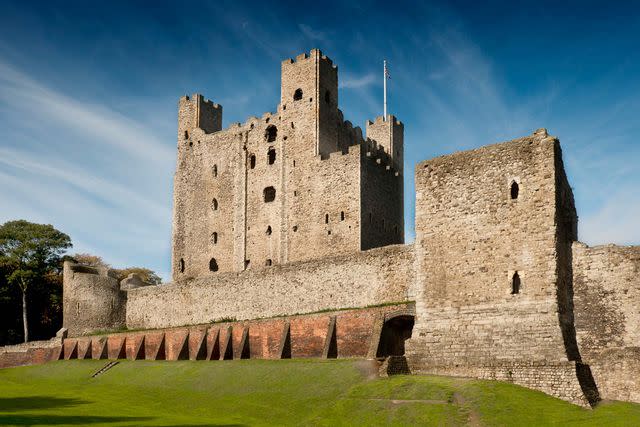
Heritage Images/Getty Images
Strategically placed by a vital river crossing on the old London Road, Rochester Castle is a miraculously well-preserved 12th-century keep — particularly considering the number of battles it’s seen over the centuries. One of the main strongholds in the rebellion against Bad King John, it lost an entire tower to a pig fat bomb in 1215 but was rebuilt under Henry III, remaining a viable fortress until the 16th century.
Bodiam Castle, East Sussex
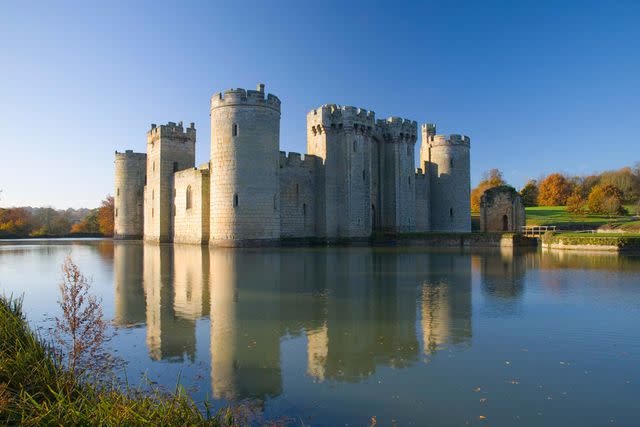
David C Tomlinson/Getty Images
If you like your strongholds encircled with a deep moat, then Bodiam is the castle for you. Built in 1385 to defend England against a feared French invasion, it ticks all of the classic battlement boxes: stout round towers, traditional gatehouse, and an intimidating portcullis. Sadly, this medieval beauty — just 14 miles from the picturesque Sussex coast — is largely just an external stone shell today. But what a shell.
The Tower of London
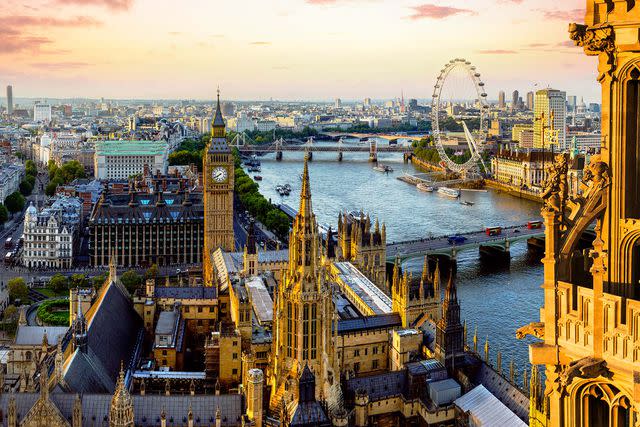
VisitBritain/Andrew Pickett
Although best known as England’s most ignominious prison during the Middle Ages, the Tower of London was built as a fortified castle and royal residence and remains both to this day. Supposedly one of the most haunted buildings in the country (two of Henry VIII’s wives were beheaded here, for starters), it’s also one of London’s top tourist attractions. Nearly three million visitors flock here every year to see the ravens, the dungeons, and the crown jewels on popular tours led by the larger-than-life Yeoman Warders, or “Beefeaters.”
Dover Castle, Kent
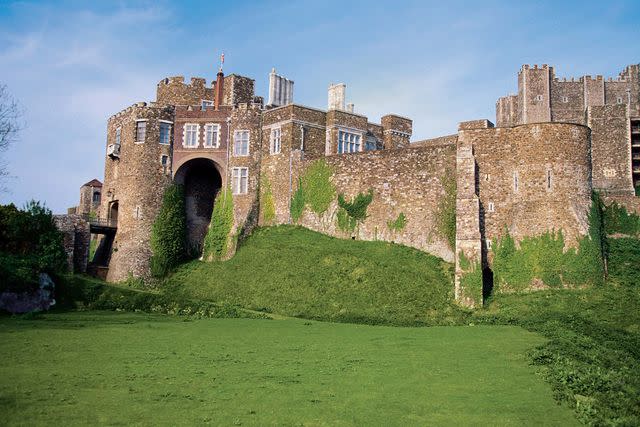
Medioimages/Photodisc/Getty Images
Nicknamed “The Key to England” due to its defensive significance, Dover Castle looks out over the blue waters of the English Channel towards France — a mere 21 miles away. Built in the 12th century, it is unique among England’s ancient fortresses in that it continued to serve a defensive purpose until well into the 20th century. The highlights here are the unmissable secret wartime tunnels, the robust Great Tower itself (now an interactive museum), and the remains of a Roman lighthouse, which dates from the year 50 and is one of the oldest standing buildings in Britain.
For more Travel & Leisure news, make sure to sign up for our newsletter!
Read the original article on Travel & Leisure.

